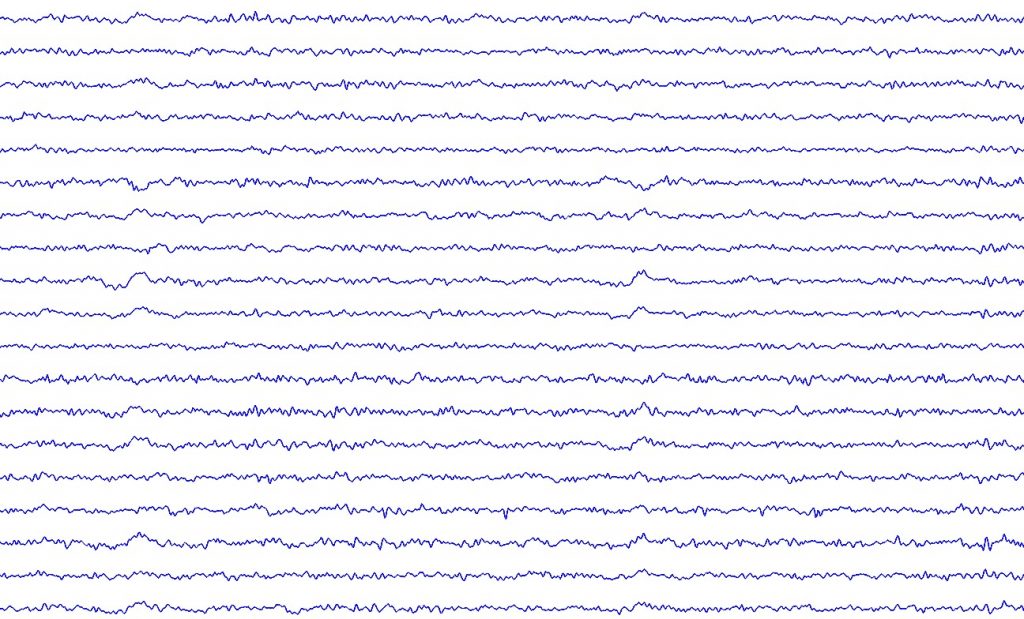
Hi everyone!
I’m Santeri Lepistö, a HiLIFE research trainee and master’s student in the neuroscience programme at the University of Helsinki. I carry out my HiLIFE internship in Satu Palva’s research group, focusing on studying the link between human brain dynamics and psychological processes. In this blog post, I give an introduction to my academic interests and internship’s research topic.
Brain-Mind Relationship
Before studying neuroscience I graduated in psychology from the University of Jyväskylä and worked for a while as a psychologist conducting neuropsychological assessments for children with neurological disorders and developmental delay. What especially fascinates me in science is the brain-mind relationship: how the brain – in a close interaction with the rest of the body – computes mental phenomena. At the level of nervous system, I’m intrigued by the human brain as a complex information-processing device that widely regulates physiological and behavioral functions. At the level of mind and behavior, my interests incline to basic psychological processes like cognitive functions, emotions, learning and development. It makes me wonder, for instance, how attention can be considered as “the set of evolved brain processes that leads to adaptive and effective behavioral selection” [1] and how, on the other hand, emotions have been proposed to serve as a coordinating mechanism, mode of operation that adjusts states of the brain and body influencing thoroughly on individual’s way to perceive, think and behave [2].
Brain, Mind and the Big Picture
My urge to examine brain-mind relationship is inspired by the puzzling questions regarding origins of the brain, mind and behavior. In order to understand astonishingly complicated human condition in all its neuronal capacity and constraints, it is important, in my opinion, to combine knowledge from both evolutionary and cultural foundations as an integrative evolutionary-cultural framework. In other words, to put multifaceted emphasis on where we come from and where we’re living. We are, as a species, an outcome of monumental evolutionary history and possess, among other organs, a brain that is shaped by evolutionary processes, such as natural selection. Alongside of acknowledging our evolutionary past, genetic makeup and biologically grounded predispositions, it is essential to underline the impact of cultural context on human ontogeny and daily living. In addition, it is pivotal to pay attention to altered environmental demands that occur in the modern world in contrast to ancestral ecological niche. Today, our brains and minds interact with factors like technology, city life, advanced medicine, educational system, art and literature, governmental policy, science and HiLIFE blog posts. The high degree coordination of human cultural practices can be traced back to brain and cognition, namely, our species-specific neurocognitive capability to establish shared goals and accumulate knowledge over time [3]. Moreover, we have an impressive ability to learn – brain plasticity to form internal models of external world [4]: humans not only use object recognition to detect faces, spoken language to communicate ideas and social cognition to cooperate but also harness their brain circuits to acquire sophisticated cultural skills concerning man-made inventions like, in case of writing systems, learn to read [5] by recognizing written words, decoding meaning of a text and taking someone else’s perspective in a novel.
Inside the Brain: Oscillatory Activity
Indeed, humans have an exceptional track record of peculiar cultural practices. But how the brain, more specifically, manages to orchestrate these kinds of complex patterns of behavior? During the HiLIFE trainee period I explore how the brain computes the mind through the lens of systems and cognitive neuroscience – by investigating activity of large-scale neuronal networks and its association to different psychological processes. When observing the beauty of the natural world, rhythms and synchrony can be found in several places, of which one is the human brain. Collective action of neurons generate rhythmic electrophysiological activity that can be studied by using brain imaging techniques like magnetoencephalography, a tool I use during my research trainee period. These oscillations, electrical ups and downs produced by vast neuronal populations, are considered to vividly reflect how the brain selects, modifies and transmits information.
To elaborate, brain’s information transmission from one place to another can be addressed by the concept called functional or effective connectivity – describing the correlation or dependence of neuronal activity from each other. Functional and effective connectivity are influenced by the structure of the brain and connect areas with similar functions. According to the hypothesis called communication-through-coherence, selective information transmission occurs when oscillations in two brain regions are synchronized and act coherently [6]. This synchronization, which is a central research topic in systems and cognitive neuroscience, provides an enlightening window to understand brain-mind relationship. For example, brain synchronization has been previously linked to attentional capacity, that is how many objects one can attend concurrently. The study conducted by Palva and colleagues suggests that individual attentional capacity is dependent on how the brain succeeds to integrate activity of different high frequency oscillations in large-scale neuronal networks [7]. From this perspective, I think the research of system-level human brain dynamics serves as an invigorating way to find novel questions and answers in the search for what’s the story behind the mind.

In the next blog post, I will tell you more about my HiLIFE research trainee experience!
References
- Krauzlis, R. J., Wang, L., Yu, G., & Katz, L. N. (2021). What is attention?. Wiley Interdisciplinary Reviews: Cognitive Science, e1570.
- Al-Shawaf, L. (2021, December 28). What Are Emotions?. Psychology Today. https://www.psychologytoday.com/us/blog/six-impossible-things-breakfast/202112/what-are-emotions.
- Tomasello, M. (2019). Becoming human. In Becoming Human. Harvard University Press.
- Dehaene, S. (2020). How we learn: The new science of education and the brain. Penguin UK.
- Dehaene, S. (2009). Reading in the brain. New York.
- Fries, P. (2015). Rhythms for cognition: communication through coherence. Neuron, 88(1), 220-235.
- Rouhinen, S., Siebenhühner, F., Palva, J. M., & Palva, S. (2020). Spectral and anatomical patterns of large-scale synchronization predict human attentional capacity. Cerebral Cortex, 30(10), 5293-5308.
